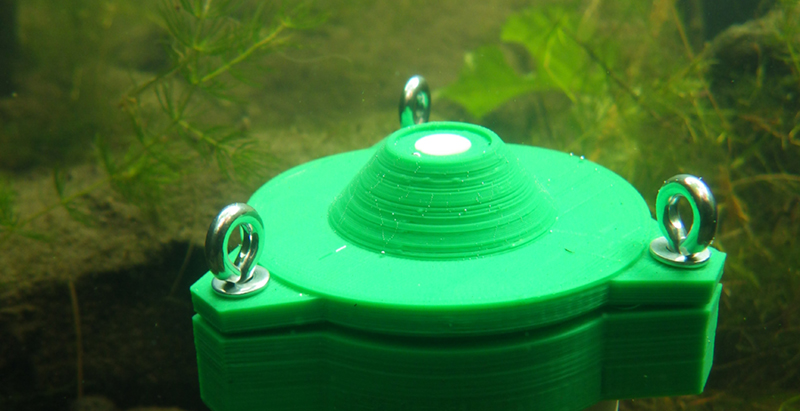The goal for the Citizen Science portion of the Hackaday Prize is to empower people to create their own devices to perform their own analyses For [Adam]’s project, he’s designing a device that measures the health of waterways simply by looking at the light availability through the water column. It’s called PULSE, the Profiling Underwater Light SEnsor, and is able to monitor changes that are caused by algal blooms, suspended sediments, or sewer runoff.
The design of PULSE is a small electronic depth charge that can be lowered into a water column from anything between a research vessel to a kayak. On the top of this sinkable tube is a sensor to measure photosynthetically active radiation (PAR). This sensor provides data on light irradiance through the water column and gives a great insight into the health of photosynthesis, marine plant life, and ultimately the health of any aquatic environment.
Measuring the light available for photosynthesis through a water column is great, but PULSE isn’t a one trick pony. On the bottom of the aquatic probe are three sensors designed to measure photosynthesis, dissolved organic matter, and turbidity. These sensors are really just a few LEDs and photodiodes, proving just how much science you can do with simple tools.
The goal of the Citizen Science portion of the Hackaday Prize is to put scientific discovery in the hands of everyone. PULSE is a great example of this: it’s a relatively simple device that can be thrown over the side of a boat, lowered to the bottom or a lake, and hoisted back up again. It’s inexpensive to build, but still provides great data. That’s remarkable, and an excellent example of what we’re looking for in the Hackaday Prize.




















Interesting project. I’ve also used 3D printed housings for underwater projects. However, one never knows whether they are truly watertight. Often water creeps in between layers etx. I’d recommend laser cut acrylic. Any leak is immediately visible!
That could instantly be fixed by a quick rub with some resin or solvent. I do agree with the acrylic though, it’s more than likely the plastic used by 3D printers may wear down faster from the elements vs acrylic which is know to be used in wet and sunny conditions.
furthermore, it would be awesome to get a temperature sensor as well and a depth sensor as well. You could potentially log the levels of the water depending on the PSI it was baselined at. This would give you accurate readings to the algae % per estimated gallon.
Great project!
@wolfy02 @Queeg
Take a look at Edward Mallon’s “Cave Pearl Project”. There’s a metric ton of information there on everything from calibrating your temperature sensors to getting the best out of your DS3231 RTC.
Edward has recently put some of the project details up on Hackaday.io (https://hackaday.io/project/6961-the-cave-pearl-project), but I’d recommend going to his blog for the nitty-gritty (https://edwardmallon.wordpress.com/category/developing-a-temp-sensor-chain/). Be prepared to lose a couple of hours of your time, though. :-)
2 Concerns:
PAR is dependent on plant type. Photosynthetic bacteria in the ocean and ponds don’t use the same region as plants.
For an instrument that requires a human to be there while it measures turbidity, you will always be competing with the Secchi disk. Where these comparatively expensive sensors excel, is when you can leave them deployed for extended periods of time.
I mild role shift would make this ‘solution’ more sensible.
I’m not a biologist or limnologist but I’ve always been interested in the temperature profile in our lake. Add a temperature sensor?